
 What to Look for When Buying Fish Oil Supplements
What to Look for When Buying Fish Oil Supplements
Taking fish oils (aka omega-3 essential fatty acids) can be incredibly beneficial for your health. Fish oil is anti-inflammatory, benefits your skin, protects vision, boosts mood, lowers cholesterol, and boosts IQ. The typical Canadian diet, however, is deficient in omega-3’s and packed full of omega-6’s. Several sources suggest that human beings evolved on a diet with a ratio of omega-6:omega-3 of approximately 1:1. Currently Canadian diets have an approximate ratio of 15:1. The typical diet promotes the pathogenesis of disease including heart disease, cancer, inflammatory disease, autoimmune diseases, etc. If eating increased amounts of fish is not an option, taking a fish oil supplement is an easy way to increase omega-3‘s in your diet. Unfortunately most fish oil supplements on the market don’t contain enough ‘medicinal ingredients’ in their recommended dose. I’m here to clarify any misconceptions you may have about dosing your fish oil.
Source: Fish oil companies should use a sustainable source of fish, with low mercury and PCB content. Eg. sardine, mackerel, anchovy.
Form: Liquid is almost always better than capsules. First off, fish oil capsules are HUGE! Secondly, capsules also require a healthy digestive system to break down the outer wall and release the contents. Thirdly, you must take many capsules to equal the dose in 1 tsp of fish oil.
Medicinal ingredients: The label on your fish oil supplement should list, not only the quantity of fish oil/dose but it should also list the quantity of (eicosapentaenoic acid) and DHA (docosahexaenoic acid).EPA supports heart health while DHA supports mental health. It is important to dose your fish oil high enough in one or both of the ‘medicinal ingredients’ in fish oil to benefit from taking the supplement. If you are preventing a deficiency of omega-3’s your dose of EPA should be 700-1000mg/day and DHA should be 200-500mg/day. If you are treating a disease/condition (heart disease, ADHD, high cholesterol, inflammation) with fish oil you need a higher dose. Your daily dose, depending on the disease/condition should be: EPA 1200-2000mg/day, DHA 300-1000/day. Both components aid in absorption of the other, so taking them together is important.
Other things to look for:
- Third party test results for purity.
- Smell and taste. If the fish oil smells or tastes fish, it has most likely gone rancid (oxidized) from being exposed to oxygen. Oxidized fish oil does not impart the benefits of fresh fish oil.
When to not take fish oil: It is always important to consult a health care provider trained in natural health products before starting new supplements. Even something that seems benign, fish oil for example, should not be taken in some instances. Here are a few examples of when to consult your healthcare provider or when to stop taking fish oil:
- Surgery
- Blood clotting disorders
- If you are on blood thinning medications
Pull your fish oil out of the fridge and read the label. Find out how much EPA and DHA you are actually taking!
How do I know if I need to take vitamin supplements? Are there some I should take every day to be healthy?
There are a few reasons you might need to take a supplement. Depending on your diet, you may need to take certain supplements to cover off nutrients you aren’t getting from food.
Or, if a blood test shows you are deficient in a certain nutrient (e.g. iron, vitamin B12, vitamin D), a supplement will be required to replenish your body’s stores.
In some cases, nutritional supplements are used to help treat certain health conditions. Vitamin C, for example, is often used to reduce cold symptoms. Fish oil is also taken to lower elevated blood triglycerides (fats).
There are four daily essentials you might need to bridge nutritional gaps in your diet: a multivitamin, vitamin D, calcium and omega-3 fatty acids (fish oil). I routinely recommend a daily multivitamin and mineral supplement to my clients. For menstruating women, who require 18 milligrams of iron each day, a one-a-day supplement helps boost iron intake.
It’s recommended that people over age 50 take a multivitamin to ensure they’re getting B12 in a well-absorbed form. Older adults are more vulnerable to B12 deficiency because they’re more likely to have decreased production of stomach acid, which is needed to release B12 from proteins in food. It’s also a good idea to take a daily multivitamin if you’re following a low calorie diet.
To keep your bones healthy, adults aged 19 to 70 require 600 international units (IU) of vitamin D each day and older adults require 800 IU. But some people will need more to maintain a sufficient level of vitamin D in their bloodstream. Sun exposure, skin colour, obesity, age and diet all have an impact on the body’s vitamin D stores. To account for individual differences, most experts recommend taking 1000 to 2000 IU of vitamin D each day to maintain adequate stores.
When it comes to calcium, I encourage people to meet daily needs through their diet. Calcium plays a role in maintaining healthy bones, keeping blood pressure in check and guarding against colorectal cancer. Adults aged 19 to 50 need 1,000 milligrams each day; older women require 1,200 milligrams. Calcium requirements for men don’t increase to 1,200 milligrams until after age 70.
One cup of milk and 3/4 cup of yogurt delivers roughly 300 milligrams of calcium as does 1 1/2 ounces of hard cheese. Calcium-enriched beverages such as soy, rice and almond milk and orange juice also provide about 300 milligrams per cup. Cooked green vegetables, legumes, almonds, tofu and canned salmon with the bones also provide some calcium.
If you need to supplement your diet with calcium, I typically recommend products made from calcium citrate, which provide 300 to 350 milligrams per tablet.
Consider taking an omega-3 fatty acid supplement if you don’t eat oily fish (e.g. salmon, trout, sardines). Higher intakes of DHA (docosahexaenoic acid) and EPA (eicosapentaenoic acid) – the two omega-3 fatty acids in fish oil – are linked with a lower the risk of heart disease and Type 2 diabetes. Getting too little DHA may also increase the risk of Alzheimer’s disease.
Aim for a daily intake of 1,000 milligrams of DHA and EPA (combined), the equivalent of eating 12 ounces of salmon per week. The dose of DHA plus EPA in fish oil capsules is typically 300, 500 or 600 milligrams. Per teaspoon, liquid fish oils contain a higher dose.
My advice: Get your nutrients from foods as much as possible. Along with vitamins and minerals, a healthy diet delivers fibre and hundreds of protective phytochemicals. That’s something a supplement can’t do.
Advice to protect your skin from the sun
While many of us look forward to the sunshine and sun tanning, we can easily forget to protect our skin.
The same rays that tan us also age our skin, causing wrinkles, fine lines, age spots and put us at an increased risk for skin cancer.
When we burn, we damage our skin. Our skin cells (melanocytes) produce melanin to protect our cells from sun damage.
This is what a tan is, the melanin is the tan. So the less melanocytes you have (the more fair your skin is), the higher your risk of sun damage, and therefore skin aging and skin cancer.
The good news is that there are ways to reverse this premature aging and reduce your risk of sun damage and skin cancer.
Here are some simple, scientifically proven, natural ways to do this: high dose antioxidants!
The top five antioxidants to add daily:
- Vitamin E—found in almonds, avocados, and sunflower seeds. As a supplement use mixed tocopherols. Dosage: 400 IU/ day
- Vitamin C—found in tomatoes, red/green peppers, melons, citrus fruits, broccoli. Dosage: use a vitamin C without sugar: 1000 mg/day.
- Resveratrol—found abundantly in the skin of red grapes, and red wine. Dosage: 200mg/day. In addition to skin protection, colleagues at the University of South Australia found that 75 obese men and women with mildly elevated blood pressure had improved vasodilation (improved blood flow throw the vessels) after six weeks of taking Resveratrol extract.
- Green tea—at least two cups per day. Studies clearly show that the polyphenols in green tea help to prevent skin tumors and skin damage.
- Vitamin B3 (Niacinamide)—in a phase II, double-blinded, randomized-controlled trial, oral niacinamide in a dose of 500mg twice a day for four months was found to significantly reduce the number of actinic keratosis (precancerous lesions) by one third. Compared with placebo, niacinamide decreased the incidence of new skin cancers (basal cell or squamous cell carcinoma) by 76 per cent, and decreased the number of patients who developed at least 1 skin cancer by 86 per cent.
All patients were encouraged to use daily sunscreen during the trial.
Oral niacinamide and other nutrients can interfere with medications.
Please consult with your health care provider before starting any new supplement program.
Below are five nutrient-rich foods for sun protection:
- Betacarotene—research shows that eating five servings of foods that contain Beta-carotene for one month is enough to protect your skin from sun damage. Foods high in beta-carotene are often orange and include apricots, cantaloupe, mangoes, carrots, sweet potatoes, squash, pumpkin, as well as, dark green leafy vegetables and broccoli.
- Broccoli sprouts—at John Hopkins University, mice fed broccoli sprouts twice a week for 17 weeks and saw a 70 per cent reduction in the formation of skin tumurs. So add broccoli sprouts to your diet! Sprinkle 1⁄2 cup daily on your salad or as a side dish.
- Lycopenes—found in tomatoes and watermelons are excellent skin protectors.
- Turmeric has excellent antioxidant properties. Use in cooking. Great in Indian dishes.
- Dark chocolate. Choose chocolate with greater than 70 per cent cocoa. Enjoy two squares per day.
What are Probiotics?
Probiotics are live micro-organisms that are known for helping to promote a healthy balance of bacteria in the gut. They are found naturally in some foods, such as yogurt and cheeses, but they are also becoming a growing part of the supplement market. As more and more of these products pop up on health food store shelves who should be using probiotics?
Everybody. Probiotics are just the normal things you have in yogurt and fermented milk. But then there are designer probiotics that we have identified have special qualities that go beyond just being food and can help treat certain disorders. So those are for people who have those disorders. The common one is that we use probiotics to treat irritable bowel syndrome. You change your diet, you introduce probiotics and you will eliminate the symptoms.
So if someone doesn’t have digestive problems, do they need to take probiotic supplements? You want to create an underlying healthy gut bacteria by eating a diversity of foods, and then if you’re still having some problems, you need to start looking at individual probiotics to treat individual problems.
Can probiotics treat problems outside of the gut? Probiotics, are for digestive health. There are some that are being looked at to treat other disorders, but those are still really investigational. There are some probiotics people have been using to treat canidida [yeast infections], but the probiotics that are being put out there on the Internet for hair growth and increased muscle mass are false. So you need to be really careful of the claims they make.
There has been talk of a connection between probiotics and obesity. Is there any substance to that? Probiotics cannot help with obesity. The line of research that’s being explored is that the bacteria in your gut, called the microbiome, played an important role in how your body functions. There are animal but not human experiments that show that obese mice, when you change the bacteria in their gut, can become thin. Whether all of that will help humans, we don’t know, but research has shown us that the bacteria in our intestines are incredibly important in how we live and how we function. But giving you a probiotic is not going to make you thin.
How do you know what to look for in a probiotic? You should be doing some research on your own, but being very careful to look for credible sources, and working with your dietitian or nutritionist who has much of this information at their fingertips.
Since probiotics are live, how do you know they’re still fresh when you consume them?Look at expiry dates. So in general, the longer a probiotic is on the shelf, the less probiotic there is there. Probiotics ultimately die out. And so you want the freshest product possible.
Are there any risks involved in taking probiotics? If you’re going to use probiotics to treat a disorder or disease, check with your doctor. And in general, people who are on immune-suppressing drugs or young children and infants shouldn’t be given extra probiotics unless, again, you check with your doctor.
Should you take probiotics when on antibiotics? Most people can take antibiotics and they can recover their own bacteria naturally because they’re eating good, diverse food. But those people who might be elderly, might be a little sick, might be on antibiotics for longer, they may need to supplement with a probiotic. You can take them at the same time as the antiobiotics and for a week after you’re done.
What’s all the fuss about COCONUT WATER
Want to hang with all the hot celebrities? Consider coconut water. At least that’s the public image of this massively popular pseudo-sports drink at this point. It’s even popping up as an add-in for gourmet coffee as an alternative to dairy. But what’s the real nutrition story behind this buzz-worthy beverage?
In a world increasingly focused on ultra-healthfulness, where do sports drinks fit? With announcements like those made by the U.S. Agriculture Department, which declared that sports drinks, along with other foods high in sugar, salt, or calories, such as candy bars, would be removed from school vending machines and cafeterias as soon as next year, sports drinks have taken another step down the health food ladder
If you popped a straw inside an immature (green) coconut, the liquid you would be sipping would be coconut water, the mega drink that has enjoyed the backing of the likes of Madonna and Rihanna. While coconut water can be enjoyed straight from a coconut, the image of getting on the subway with a large brown-husked fruit lacks a certain convenience; hence, the introduction of cans and tetra-packs, which have become vehicles for sales that have been said to have exceeded US$350-million a year. Coconut water can now be found in health food, grocery, and convenience stores alike. It’s everywhere.
THE NUTRITION
The affection for coconut water comes from several areas: Not only is it a low-calorie beverage, usually ranging between 30 to 70 calories per serving, but it is also said to be rich in potassium (providing approximately 17%, or 600 mg, of your daily value for this key nutrient that plays a role in blood pressure control and possibly athletic performance). In a world where added sugars, artificial colours and sodium are the norm, many athletes like to feel that they are fuelling their bodies with something natural.
THE SCIENCE
In the first known study to compare a traditional sports drink to coconut water, coconut water proved just as effective for rehydrating treadmill runners who had undergone a 90-minute run designed to cause dehydration vs. a traditional sports drink or plain water, while another study suggests coconut water may be better tolerated (meaning it causes less nausea and stomach upset), when consumed after intense exercise.
Unfortunately, that’s the extent of the research to date, and when it comes to prolonged activity (two hours or more), the carbohydrates in coconut water fall short. While it’s recommended athletes aim for four to eight grams of carbohydrates per 100 mL of fluid, coconut water provides just nine grams of carbohydrates per 250 mL, or 3.6 grams of carbohydrates per 100 mL. In other words, its sugar content is less than an athlete would need to keep them from running out of gas during a marathon, soccer tournament or long day of cycling. Its sodium content is also relatively low, which could also be an issue for heavy sweaters or for athletes exercising in hot weather.
In August 2011, a published a report that, among three major U.S. brands of coconut water — Vita Coco (distributed through the Dr Pepper Snapple Group Inc.), O.N.E. Coconut Water (purchased by Pepsi in 2010) and Zico Natural (scooped up by Coke in 2009 for $15 million) — only Zico Natural lived up to its labelling claims for sugar, sodium, potassium and magnesium. VitaCoco, which boasts Demi Moore and Madonna as investors, contained only 64% of the magnesium claimed on its labels, while O.N.E. contained only 77%, and both were off the mark for their sodium content. As a result of the report, a class action lawsuit was launched against Vita Coco, who agreed, in a settlement, to change its packaging, improve quality control and remove comparisons to sports drinks, including statements claiming that Vita Coco contains 15 times the potassium found in leading sports drinks.
DRINKING COCONUT WATER
While coconut water’s taste qualities vary by brand, its taste is distinct, and not always well-liked. As a result, an increasing number of coconut water blends are available, often with higher amounts of sugar, and diminishing amounts of coconut water. So reading the fine print is essential here, and that includes the ingredients list.
If coconut water actually contains what it is supposed to, then it can be used as a sports drink for shorter bouts of activity. Unfortunately, the research on coconut water for health or performance is extremely limited, and when combined with the industry’s spotty labelling history, this is still a case of buyer beware.
Do Liver cleansers really work?
The death rate from liver disease in Canada is rising up 30 per cent between 2000 and 2007, according to a report from the Canadian Liver Foundation. And judging by the number of cleanses on the market, Canadians’ concerns for their livers is growing as well.
Unfortunately, they don’t work. There’s nothing you can do for a week that’s going to make up for a year or 10 worth of bad habits.
Here are some top tip for keeping your liver healthy:
EAT YOUR VEGETABLES: Dark leafy greens, deeply coloured fruits and cruciferous vegetables are particularly good for your liver, as are beans.. These also aid weight loss, which reduces the risk of fatty liver disease.
DROP THE SUGAR: People often think of alcohol as most harmful to your liver, but in fact, sugar and sugar-filled drinks like pop have a similar effect.
Some of the studies that are coming to the forefront now talk about the impact of sugar on the liver being exactly the same as alcohol. A can of soda does the same thing as a shot of tequila.
GET VACCINATED FOR HEPATITIS: Hepatitis A and B are both liver diseases and both are preventable with a vaccine. Ask your doctor if you need a shot. Also consider getting tested for hepatitis C.
WATCH YOUR MEDS: Tell your doctor everything you’re taking combining herbal medicine, vitamins, over the counter drugs and prescription medications can be harmful for your liver.
People don’t realize taking too much acetaminophen (Tylenol) can damage your liver. During cold and flu season, it’s easy to accidentally take too much by popping an all-purpose pill and taking acetaminophen after.
Combining acetaminophen and alcohol by taking a pill at night to prevent a morning hangover is also damaging.
Eco Friendly: Your liver’s job is to process toxins and that includes those in the environment that you breathe in or ingest. For so long we kind of ignored it, but now we know with those toxins, they actually have to be filtered out by your liver.
Using eco-friendly products in your home is a simple way to reduce your toxic load. Go environmentally friendly or DIY as much as possible.
An Unlikely New Ally in the Fight against Acne
Pimples on your skin can be a frustrating experience for the majority of adolescents and up to 5% of the adult population that suffer through them. Research has focused on these sudden and for the most part unwanted uprisings, yet only in the last few years has a true cause and potential cure been found.
Not surprisingly, germs play a distinct role.
The formation of acne is a complicated process and may involve several factors such as overproduction of hormones, an imbalance in the amount of oils on your skin, and even diet. But the actual trigger has been shown to be a bacterium known as Propionibacterium acnes. The bacterium is actually a part of our normal microflora but can overgrow in hair follicles when there is an overabundance of a specific type of molecule known as a triglyceride. The bacteria are then able to grow to large enough numbers to trigger the immune system.
When that fight initiates, the skin and surrounding areas become inflamed, the immediate surroundings are filled with bacteria fighting white blood cells, and the normal process of skin peeling is halted. The overall effect is a bump that continues to grow until the battle is won or the person decides that enough is enough and uses a combination of pressure and friction to push the mass out from under the skin, better known as popping the zit. The latter however is not a recommended choice as damage from the pop may then lead to scarring or worse, other skin infections.
With the cause and process of acne elucidated, there have been a number of solutions marketed to help prevent and also remedy the affliction. Most have been chemically based, however other more involved procedures have been explored including lasers and light therapy as well as chemical peels. Yet in the last few years, there has been a different approach to controlling acne through a natural process of using good germs to control bad ones.
There have been several studies looking at how probiotics can help improve the look and feel of the skin and hair. A rather unique paper looked at how mice appeared to have shinier fur after eating yogurt; another examined the relationship between the gut, brain, and skin health. In light of these studies and others, the cosmetics market has become inundated with products for the face and skin featuring an array of different probiotics. Yet a group of researchers based out of UCLA published an article in Naturethat took the use of probiotics to an entirely different level.
In this study, the researchers took a closer look not at the usual species of good bacteria, but instead at the different types of P. acnes to see if there were any strains that could be used to help keep the skin safe. They found 10 different categories, known as ribotypes on the skin and of those, three stood out from the rest.
One ribotype, denoted RT6, was associated with healthy skin whereas two others, RT4 and RT5, were heavily involved in the formation of acne. The researchers went on to show that RT6 contained specific elements, awkwardly named Clustered Regularly Interspaced Short Palindromic Repeats (CRISPRs), which are known to help the immune system fight off infections. Overall, the results suggested that an imbalance of RT4 and 5 might lead to higher incidences of acne while RT6 might be a prime candidate for topical use to help prevent blemishes.
The research is preliminary at best and there needs to be more work on the different ribotypes to learn whether or not acne can be prevented by a probiotic. The authors even state that there are many other factors involved that need to be taken into consideration. But to provide backing to this theory, another paper published has shown that P. acnes might be useful as a probiotic to prevent other skin infections such as Methicillin-Resistant Staphylococcus aureus (MRSA).
Over the coming months and years, probiotic creams to improve the look of skin will undoubtedly grow in numbers and reputation. There will be the usual array of adopters and detractors who will either bring a clearer light to the picture or, as with other natural health products, muddy the waters such that no one knows where to turn. However, thanks in part to the Nature study, there is hope that in the not too distant future, medically proven treatments will become available to help those who suffer and perhaps put an end to acne forever.
Here are some tips:
Never Squeeze: No doubt, you’ve heard this one before, but it bears repeating. While it’s tempting to pop whiteheads and blackheads, overzealous picking can lead to scars and marks on your skin (and remember aging skin takes longer to regenerate, so those tell-tale, picked over marks are likely to hang around for weeks or even months). Popping also spreads bacteria from your fingers to your skin, causing even more pimples to form
Beware Drying Out Skin: Teenage acne accumulates around the oily T-zone area (forehead, nose and chin) so alcohol-based astringents are a teen’s treatment of choice. In contrast, adult acne clusters along the jawline (which isn’t typically oily), so you’ll want to stay away from that bottle of Sea Breeze. Skin generally becomes drier as we age, so harsh exfoliating and drying ingredients found in most acne medications are far too aggressive. Use a salicylic acid-based cleanser and to avoid irritation, keep your product numbers low. You wouldn’t want to use a face wash for oily skin and then layer an anti-aging medication that deeply exfoliates over top.
Steer clear of Pore-Clogging Markeup: Breakouts caused by makeup are so common there’s even a name for it — acne cosmetica. If you’re suffering from spots, use a non-comedogenic, mineral-based makeup line like Jane Iredale. These products are oil-free, so they don’t exacerbate acne but offer full coverage. And be sure to wash makeup brushes each week to rid them of acne-causing bacteria. Fancy cleaners aren’t necessary: A mixture of water and baby shampoo will do the trick.
Don’t Skip the Sunscreen: Slathering on a thick, creamy sunscreen may seem counterintuitive, but sun protection needs to be an important part of your daily skincare regimen to help prevent both acne and wrinkles. The sun’s rays break down collagen, causing lines to form. They also dry out your skin, which prompts the sebaceous glands to overcompensate by pumping out more pore-clogging oils and causing breakouts. Use a lightweight formula designed for acne-prone skin.
What you should know about Vitamin B12
Vitamin B12 is an essential part of life. It plays a key role in the normal functioning of the brain and nervous system and for the formation of blood. More than that, B12 is involved in the metabolism of every cell of the human body, especially affecting DNA synthesis and regulation.
This vitamin, so essential to healthy bodies, is found in many foods including eggs, meat, dairy products, poultry and shellfish as well as in fortified foods like soy milk and cereals. The amount of B12 needed to stay healthy is minute, just 2.4 micrograms per day (that’s 2.4 thousands of a gram).
While abundant, getting B12 from food involves a complex chemical process which may not be sufficient in some people. For example, a person who consumes no animal products will be susceptible to a deficiency of the vitamin. Older people may have changes to their digestive tracts that affect their ability to absorb vitamins leading to incomplete absorption. Poor diet and excessive drinking can also contribute to deficiency of B12.
Another at-risk group are people with diseases of the intestinal track like Crohn’s or celiac disease, those who have had chronic pancreatitis and anyone taking certain drugs for gout, seizures or diabetes (metformin).
B12 works in conjunction with other B vitamins such as folic acid and B6 to keep an aging brain healthy. Getting too little B12 it risks pernicious anemia, a decrease in red blood cells that occurs when your intestines cannot properly absorb the vitamin.
Initially, low B12 levels may show no symptoms or very subtle ones that are easily ignored or missed. Vitamin B12 deficiency anemia, as it worsens, may causes symptoms such as weakness, tiredness or light-headedness, rapid heartbeat and breathing, pale skin, sore tongue, stomach upset and weight loss, diarrhea or constipation.
Not corrected, the next stage will damage nerve cells leading to tingling or numbness in fingers and toes, difficulty walking, mood changes or depression, memory loss, disorientation and dementia. We may well dismiss the early symptoms as “just getting old.” Don’t fall for it!
How much B12 does the body need? Microscopic amounts, actually. A healthy body requires about 2.4 micrograms (that is 2.4 one-thousandths of a gram) per day easily available from most diets. The value to the body is emphasized by the liver’s ability to store B12 for long periods, months’ even years’ worth.
Most people over 50 do not have to worry about B12 levels if they eat animal products. However, should there be any of the symptoms mentioned, it would be wise to discuss the possibility of B12 deficiency with your doctor. Ignoring the signs will do no good and may lead to much greater problems.
For someone who is getting too little B12, or not properly absorbing it, supplements are an option. Before making that decision, find out if you really need it. All it takes is a simple blood test.
4 Food Combinations That Will Boost Your Health and Productivity
Sometimes two is better than one, especially when it comes to nutrition. While we all know there are certain food combinations that taste good together (think fries and ketchup), nutrition experts have discovered that certain food combinations can also make us healthier. When certain foods are combined, the nutrients in one food help you better absorb the nutrients in another food.
Called “food synergy,” these pairings of nutrient-rich foods can help boost your energy and long-term health. Try these 4 food combinations to supercharge your health and productivity:
Support brain health and boost energy with iron + vitamin C: Iron is a very important nutrient for thinking, memory and also for energy. If you’ve ever suffered from anemia an iron deficiency, you know that low iron can make you feel like you’ve been run over by a freight train. Your muscles aren’t oxygenating properly when you’re low on iron.
Dark leafy greens such as spinach, kale or arugula are a great source of iron, but plant-based iron is better absorbed when consumed with vitamin C. Add blueberries, raspberries or strawberries to a salad with spinach leaves to boost your iron consumption.
Support heart health and reduce stress with green tea + lemon: Antioxidants called polyphenols in green tea are better absorbed when combined with vitamin C. Polyphenols promote heart health by helping to lower cholesterol and help prevent cancer.
Vitamin C has another benefit for entrepreneurs, helping to keep adequate blood flow to the brain, something commonly affected by stress. You may notice if you’re stressed, your short term memory is weaker. Lemons have a high concentration of vitamin C and combined with the antioxidants of green tea, packs a powerful health punch.
Boost your immune system with vitamin A + healthy fats: Busy entrepreneurs don’t have the time to get sick. Keeping your immune system strong is essential to protecting your business from illness. Vitamin A is very important for your white blood cells which keep your immune system strong. Orange-colored foods such as carrots, squash, cantaloupe or orange peppers are good sources of vitamin A. Vitamin A is a fat-soluble vitamin that is stored in your body until needed, and is best absorbed when eaten with healthy fats, such as avocado, olive oil, nuts, seeds or fish.
Boost your brain power with vitamin D + calcium: Calcium is an important mineral for strengthening the brain’s neurotransmitters. When a chemical signal arrives at a brain cell, it’s the job of calcium ions to deliver that signal from the outside of the cell to the inside. Strengthening your brain’s neurotransmitters means you’ll be better able to think on your feet.
Sources of calcium include dairy products, green vegetables such as broccoli or leafy greens, and seeds or nuts. But eating these foods alone won’t give you the brain-boosting benefits of calcium. Add a hard-boiled egg to your salad for optimal brain power as calcium is best absorbed with the aid of Vitamin D-rich foods such as eggs, sardines and salmon.
Melatonin Can Do Much More than Help You Sleep
There’s a reason melatonin is on many doctors must-have anti-aging list and touted by celebrities like for its powerful ability to encourage sleep and slow aging.
While melatonin is produced during deep sleep, its benefits are not reserved to the midnight hours, however. From reducing PMS and migraines to slimming waistlines and boosting thyroid, this little magic pill does more than just put the ‘beauty’ back in sleep.
More melatonin, less PMS: If your monthly PMS symptoms have you pulling out your hair or send your partner running for the hills, you may want to look at your sleep habits. Researchers have shown that low melatonin levels play a role in premenstrual dysphoric disorder (PMDD), or good old fashioned PMS. This doesn’t, however, just affect one week in the month. Compared to their counterparts, PMDD sufferers had a further reduction in melatonin levels during their symptomatic luteal phase the second half of their menstrual cycle when progesterone is at its highest. If this sounds familiar, try taking melatonin on days 12-28 of your cycle with day one being the first day of bleeding to see if takes the edge off your mood, and provides a restful slumber back into your nights.
Age in reverse: If you didn’t worry about it in your first 30 years, you will in the next 30…aging. The great news is melatonin has been shown to slow down the aging process. A research team in Paris found melatonin-based treatment can delay the first signs of aging in small mammals by at least three months considering the animal lives just to 12 months, this is quite substantial! While it may not get you carded while buying your favourite bottle of red wine, it will keep people thinking there are substantially less candles on your birthday cake.
Keep your belt a little tighter: We all know that the morning after a poor night’s sleep can leave you veering from your diet and craving high-sugar foods. Well, low melatonin levels are actually a risk factor for diabetes. Melatonin receptors have been found in many tissues of your body, including the pancreas which produces insulin the fat-storing hormone. Participants with the lowest melatonin levels faced two times the risk of developing diabetes, compared with those with the highest levels. It certainly poses the question: does pre-diabetes begin with insomnia?
In a separate study, researchers found that melatonin can even control weight gain without reducing food intake showing that sleep is indeed a required weight loss remedy.
Manage your migraines: My bet is that if you suffer from migraines, you would likely try anything to put an end to the discomfort and get a good night’s sleep. Low levels of melatonin have been linked to a variety of headache types and have been shown to alleviate the pain. Results from one study, presented at the American Academy of Neurology’s 65th annual meeting showed that, “Three mg of melatonin was more effective than the placebo and had efficacy similar to that of 25 mg of amitriptyline, a common sleep aid and antidepressant. Furthermore, it was better tolerated than amitriptyline, with lower rates of daytime sleepiness and no weight gain.”
Supporting research published found that two thirds of patients taking 3 mg of melatonin nightly experienced a 50 per cent reduction of headaches per month. Additionally, the intensity and duration of headaches decreased. Adding this to the arsenal of migraine prevention techniques such as magnesium supplementation or a gluten-free diet may be your ticket to living headache-free.
Wake up a sluggish thyroid: As we age, night levels of melatonin also decline and with it comes an overall decrease in quality and quantity of sleep not to mention a reduction in many hormones and thyroid, your metabolic master is one of them. Researchers from the Menopause Center in Italy found that among peri-menopausal and menopausal women ages 42-62, administering 3 mg of melatonin at bedtime caused most of the women to report a general improvement of mood and a reduction in symptoms of depression, and highly significant improvement of thyroid function. This makes melatonin another powerful tool in the fight against the dreaded belly fat of menopause.
Finding the right balance of proteins and carbs
Gaining muscle for some athletes goes like this:
Breakfast: A protein drink made of Greek-style yogurt, protein powder (two scoops), frozen berries, honey and hemp, eaten three times a day, plus vitamin supplements for muscle building.
Lunch: Two grilled chicken breasts, steamed vegetables, cottage cheese and fruit.
Snack: Protein drink and a protein bar after his workout.
Dinner: Two steaks, broccoli, salad, grilled vegetables, one small potato.
Snack: Protein drink or protein bar.
Why so much protein in your diet? What about carbohydrates and fats? They are just as important and have a valuable role in building muscle and growth. Don’t you miss breads, noodles and rice dishes? They are important for energy, like gas is for a car. Have you felt fatigued after a week of working out and taking in so little carbohydrates?
How long he could stay on such a program?
Here are the “pros” of eating protein:
* Building and maintaining tissue.
* Hormone and enzyme production.
* Building block for bones, muscles, skin and blood.
* Requires less insulin for digestion and metabolism. This may result in improved satiety and lead to less food intake to support weight loss.
Unlike carbohydrates and fats, the body cannot store protein to draw on when in need of a new supply, so we need to incorporate some protein-rich foods into our diet throughout the day.
These are the “cons”of eating too much protein:
* Taking in protein will not build more muscle. Any extra protein is broken down and converted, partially, to ammonia where it is passed through our kidneys. Long-term high intake of protein causes the kidneys to work excessively hard.
* Can cause dehydration. This in turn compromises muscle efficiency and increases the risk of muscle injuries.
* Can cause bone loss. Too much protein in the diet causes the body to excrete excess calcium in the urine due to an increase acid production.
* Can increase cardiovascular risks. Animal protein foods are also high in saturated fats.
* Can cause weight gain. Extra protein is converted to be stored as extra fat if we take in more calories than we need.
* Poor source of energy. Protein is converted to ketones as a source of energy if the intake of carbohydrates is low.
A compromised intake of antioxidants, vitamins, minerals and fibre occur if there’s an inadequate intake of fruits and vegetables.
Recommended guidelines for protein intake vary with age, gender, activity level and health status. The average protein intake ranges from 0.4 -1.2 grams/lb. of body weight. Thus, a 170 lb. athlete would aim for around 136 grams of protein a day.
Check out: MY BOOK to find your guideline for protein intake and many other stats, tips and tricks to help you to become the best you can be.
This information is not meant to treat or diagnose. It is meant to educate readers and be used as a resource when talking to your healthcare provider
I know you want to get in shape and look great. Whatever your fitness goal…to slim down…gain muscle…tone your arms or flatten your tummy…I’m here to help you accomplish your goals and to improve your fitness level. If you have enjoyed this article and the many other free features on my site, and would like some more comprehensive information such as fitness books and CD’s to aid you in achieving your health and fitness goals, please visit myONLINE STORE where you will find innovative natural health and beauty products to help you become the BEST YOU CAN BE !

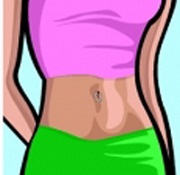 The following article is a small excerpt from one of my books. I hope you’ll want to learn more and let me help you to get into the best shape of your life.
The following article is a small excerpt from one of my books. I hope you’ll want to learn more and let me help you to get into the best shape of your life.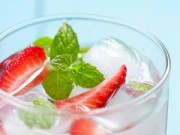
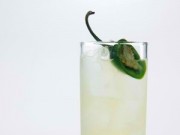

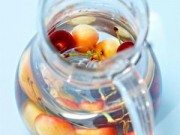
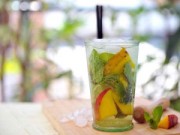
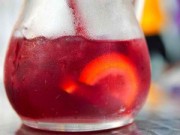
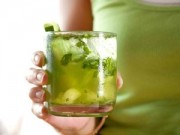
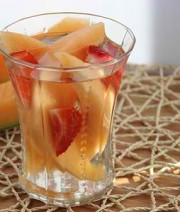


 Are stevia and agave syrup healthier sweeteners than sugar?
Are stevia and agave syrup healthier sweeteners than sugar?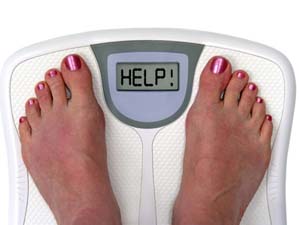 The following article is a small excerpt from one of my books. I hope you’ll want to learn more and let me help you to get into the best shape of your life.
The following article is a small excerpt from one of my books. I hope you’ll want to learn more and let me help you to get into the best shape of your life. What soap is to your body, laughter is to your soul.
What soap is to your body, laughter is to your soul. Laughter can ease pain. You use energy focusing on pain when you’re ill. When distracted by laughter, your focus shifts away from pain, you relax and your body gets a few minutes of relief. That doesn’t mean that therapeutic laughter has become mainstream medicine. It’s accepted as music is accepted.
Laughter can ease pain. You use energy focusing on pain when you’re ill. When distracted by laughter, your focus shifts away from pain, you relax and your body gets a few minutes of relief. That doesn’t mean that therapeutic laughter has become mainstream medicine. It’s accepted as music is accepted.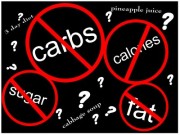 The following article is a small excerpt from one of my books. I hope you’ll want to learn more and let me help you to get into the best shape of your life.
The following article is a small excerpt from one of my books. I hope you’ll want to learn more and let me help you to get into the best shape of your life. The following article is a small excerpt from one of my books. I hope you’ll want to learn more and let me help you to get into the best shape of your life.
The following article is a small excerpt from one of my books. I hope you’ll want to learn more and let me help you to get into the best shape of your life. The following article is a small excerpt from one of my books. I hope you’ll want to learn more and let me help you to get into the best shape of your life.
The following article is a small excerpt from one of my books. I hope you’ll want to learn more and let me help you to get into the best shape of your life. The following article is a small excerpt from one of my books. I hope you’ll want to learn more and let me help you to get into the best shape of your life.
The following article is a small excerpt from one of my books. I hope you’ll want to learn more and let me help you to get into the best shape of your life.